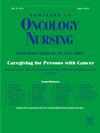癌症护理干预的成本-效果:系统回顾。
IF 2.3
4区 医学
Q1 NURSING
引用次数: 0
摘要
目的:本研究旨在综合评估护理干预对癌症护理成本影响的研究。方法:检索2001年至2024年PubMed、Scopus、Web of Science、MEDLINE、Cochrane Library和CINAHL中有关癌症护理干预成本-效果的随机对照试验。搜索策略和选择过程遵循系统评价和荟萃分析(PRISMA)指南的首选报告项目。如果研究(1)涉及护理干预(护士主导或护士参与),(2)对成年癌症患者进行的研究,(3)报告的成本效益结果,以及(4)是随机对照试验,则纳入研究。研究选择过程是在Rayyan项目上进行的。采用综合卫生经济评价报告标准(CHEERS)检查表对纳入的研究进行质量评价。结果:24项研究符合标准并进行了分析。超过一半的研究(18/24)被归类为中等质量。干预护理的类型包括跟进、家访和需求评估(n = 11日46%),教育项目(n = 2 8%),电话随访(n = 6 25%),心理支持(n = 1,4%),组织医疗咨询(n = 1,4%)和老年评估管理(n = 1,4%)。其中17项干预由护士领导,5项干预由包括一名护士在内的卫生保健小组执行。结论:在本系统综述中,许多纳入的研究显示了护理降低成本的效果。成本效益可以证明是说服卫生保健系统决策者将干预措施纳入护理服务的一种方式;在这方面,这一结果意义重大。对护理实践的影响:护士是卫生保健服务结构的关键因素之一,包括融资、成本效益和资源管理。在癌症治疗方面,考虑到世界上高昂的治疗费用,有必要使这种情况具有成本效益。作为卫生保健服务的提供者,护士应提供降低成本的干预措施的证据。本文章由计算机程序翻译,如有差异,请以英文原文为准。
The Cost-Effectiveness of Nursing Interventions in Cancer Care: Systematic Review
Objectives
This study aimed to comprehensively examine the studies evaluating the cost impact of nursing intervention in cancer care.
Methods
PubMed, Scopus, Web of Science, MEDLINE, Cochrane Library, and CINAHL were searched between 2001 and 2024 for randomized controlled trials examining the cost-effectiveness of nursing intervention in cancer care. The search strategy and selection process was done following the Preferred Reporting Items for Systematic Reviews and Meta-Analysis (PRISMA) guidelines. Studies were included if they (1) involved nursing intervention (nurse-led or nurse involved), (2) were conducted with adult patients with cancer, (3) reported cost-effectiveness outcome, and (4) were randomized controlled trials. The study selection process was performed on the Rayyan program. The Consolidated Health Economic Evaluation Reporting Standards (CHEERS) checklist was used for quality assessment of included studies.
Results
Twenty-four studies met the criteria and were analyzed. More than half of the studies (18/24) were classified as moderate quality. The types of interventions were nursing care including follow-ups, home visits and needs assessment (n = 11, 46%), education program (n = 2, 8%), telephone follow-up (n = 6, 25%), psychosocial support (n = 1, 4%), group medical consultations (n = 1, 4%), and Geriatric Assessment Management (n = 1, 4%). Seventeen of the interventions were led by the nurse and five were performed by the health care team including a nurse.
Conclusions
In this systematic review, many of the included studies showed the cost-reducing effect of nurse care. Cost-effectiveness can be demonstrated as a way to convince health care system decision-makers to integrate an intervention into care services; in this respect, this result is significant.
Implications for Nursing Practice
Nurses are one of the key factors in the structure of health care delivery, including financing, cost-effectiveness, and resource management. In terms of cancer care, considering the high treatment costs in the world, there is a need to make the situation cost-effective. As providers of health care services, nurses should provide evidence of cost-reducing interventions.
求助全文
通过发布文献求助,成功后即可免费获取论文全文。
去求助
来源期刊

Seminars in Oncology Nursing
Nursing-Oncology (nursing)
CiteScore
3.40
自引率
0.00%
发文量
68
审稿时长
45 days
期刊介绍:
Seminars in Oncology Nursing is a unique international journal published six times a year. Each issue offers a multi-faceted overview of a single cancer topic from a selection of expert review articles and disseminates oncology nursing research relevant to patient care, nursing education, management, and policy development.
 求助内容:
求助内容: 应助结果提醒方式:
应助结果提醒方式:


